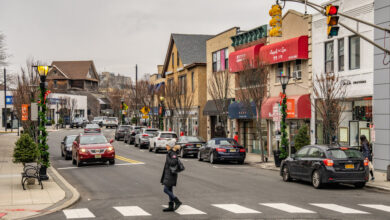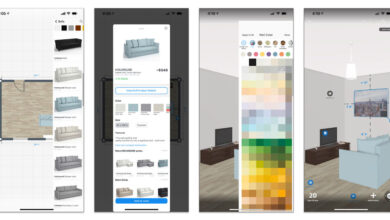Finding a Home that Can Accommodate a Disability

[ad_1]
When Jason Knebel moved to a new apartment about two months ago, he made a rare purchase for a single person moving into a studio: a second bed.
Over the past four years, Mr. Knebel, a 34-year-old software engineer, has developed a pain and mobility disability that makes it uncomfortable to stand for long periods of time, and makes sitting nearly impossible. He prefers to work lying down, but didn’t want to spend the majority of his time in the bed where he sleeps.
So now, he has a sleep bed and a work bed, both of which are adjustable. And he has his television and monitors mounted in view of the latter, for a fully reclined work-from-home setup. “The nice part is it makes watching TV and playing video games very comfortable,” Mr. Knebel said with a laugh.
The extra bed was part of a greater mission in his move. “The entire move was about paying the extra money and optimizing my life around pain,” Mr. Knebel said. “Which is a terrible thing, but it does make it easier. I’m feeling better overall.”
$2,433 | Prospect Heights, Brooklyn
Jason Knebel, 34
Occupation: Software engineer
On the benefit you might not know you have: Mr. Knebel has been making great use of his health advocacy benefits through his employer, through which he has found nurses to help collect medical records and help him find a wheelchair manufacturer that takes his insurance. At $12 a month, he says, “it’s the best money I’ve ever spent.”
His favorite bonus: His new studio has soft-close cabinets, which close more gently and quietly than their standard counterparts. “I did not appreciate the soft close before I moved in,” Mr. Knebel said.
Mr. Knebel’s previous apartment was a third-floor duplex in a walk-up in Williamsburg, which he shared with a roommate. He had the top floor of the duplex to himself, with a private balcony, but it was only accessible through an 80-pound trap door at the top of a staircase. When he moved there in 2018, he was dealing with what he thought was tendinitis in his foot, for which he wore an orthopedic walking boot.
By 2019, he learned that he was actually dealing with a nerve issue, which he believes resulted from an improperly taught fitness class, and which he’s still trying to understand. At that time, he was using a wheelchair and working from a recliner, which was at best an imperfect solution.
It was difficult to get up and down the four sets of stairs between his apartment and the street, and his friends or roommate had to take his laundry to the laundromat and back for him. “When I first got there, I thought I was going to be getting better,” Mr. Knebel said. “And I just didn’t have the acceptance of living like this. In the last year, I’ve realized that this is going to be around for a while.”
As rents across the city began to rise this spring, Mr. Knebel knew it was time for him to move. His lease was up at the end of August, but he predicted that prices would continue to skyrocket, so he decided to move at the end of June and sublet his space in his previous apartment for the last two months of his lease.
His priority was finding an apartment near a transit hub with a dishwasher and an elevator, ideally something with laundry in the building. Mr. Knebel looked at apartments near Grand Central Terminal and Fulton Street in Manhattan, but ultimately landed on a 500-square-foot studio in a mid-rise apartment building near Atlantic Terminal in Brooklyn. His rent is $2,443 a month, but he was able to negotiate two months free on a 14-month lease.
One aspect of the new apartment that makes life much easier for Mr. Knebel is the in-unit washer/dryer, which is a big change from relying on others to do it for him. “The biggest thing with all this is lack of agency,” he said. “To say, ‘I want that thing on the other side of the room, but how badly do I want it?’ Because sometimes it’s not worth the pain.”
The location, too, is ideal. Proximity to a large transit hub means that Mr. Knebel’s friends can come visit him easily. His apartment building also has a spacious rooftop, with strategically placed greenery to allow for a bit of privacy between congregating groups. It also offers a private lounge area, which he could reserve for, say, a dinner party. (Given the size and layout of his apartment, he can only host a few people at a time.)
Larger transit stations like Atlantic Terminal also offer better accessibility. Mr. Knebel currently uses a cane, but he is working on getting a reclining wheelchair, and living near an accessible station with elevators will make his commute to work near Battery Park more manageable once his office reopens.
In the meantime, he has enjoyed getting to know the area. His neighborhood is dense with restaurants and bars, like Patsy’s Pizzeria, which has become a new favorite. “I’m really lucky that that’s the second closest restaurant to me,” he said. And he has enjoyed walking the more residential, tree-lined side streets of Park Slope.
Mr. Knebel’s latest project is building a workbench for his 3-D printer, which will allow him to work on side projects that offer an opportunity for creativity, and a boost for his mental health.
“I want to have ideas for things to design and make my life easier,” he said. “One of the things I realized is I need to be able to build things. I need something physically that I can keep myself entertained with.”
[ad_2]
Source link






